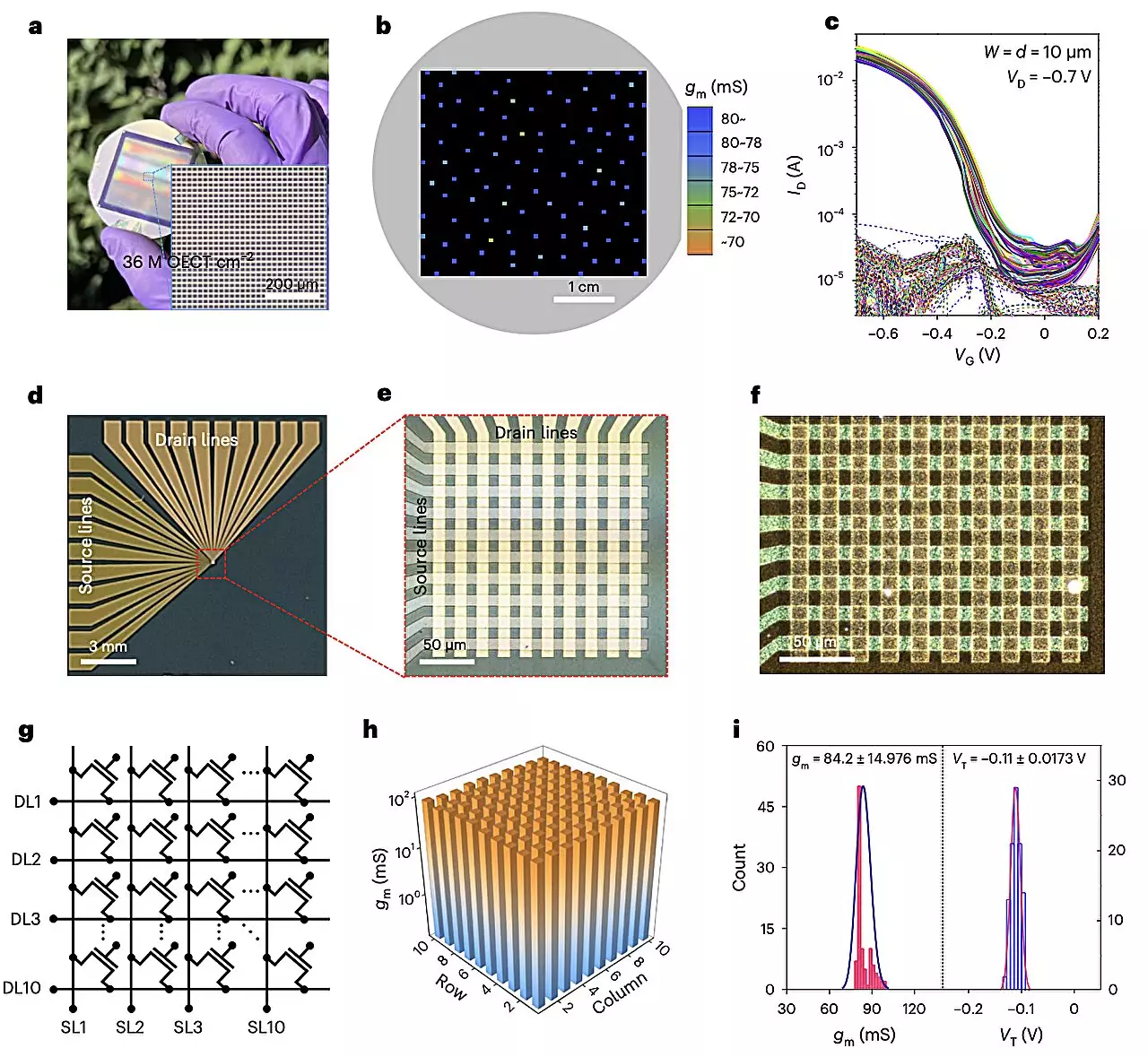Organic electrochemical transistors (OECTs) have gained attention for their ability to modulate electrical current in response to small changes in applied voltage. These transistors, based on organic superconducting materials, have shown promise in the development of brain-inspired and wearable technologies due to their notable advantages, such as promising amplification and sensing capabilities, low driving voltages, and a versatile structure.
Despite the advantages offered by OECTs, conventional devices have been limited by stability issues and slow redox processes. These limitations can significantly impact their overall performance, hindering their widespread adoption in electronic applications.
Researchers at Northwestern University have proposed a novel approach to fabricate high-density and mechanically flexible OECTs. By utilizing electron-beam lithography (eBL) to micropattern organic semiconductor films, they were able to create high-density vertical OECT arrays and circuits with remarkable properties.
The use of eBL allowed the researchers to produce ultra-small, high-density films with well-defined conducting channel regions. This resulted in the creation of p- and n-type vertical OECT arrays with transconductances ranging from 0.08 to 1.7 S, transient times of less than 100 µs, and stable switching properties exceeding 100,000 cycles.
In addition to OECT arrays, the fabrication strategy was also utilized to create vertically stacked logic circuits, including NOT, NAND, and NOR gates. These circuits demonstrated excellent performance and operational stability, showcasing the potential for the widespread use of OECTs in electronic devices.
The recent study conducted by Kim, Pankow, and their colleagues could pave the way for the development of innovative approaches to enhance the stability and performance of OECT circuits. The e-beam exposure strategy introduced in their research has the potential to streamline the scalable fabrication of OECTs, making them more accessible for integration into a variety of electronic devices.
The advancements made in the fabrication of OECTs represent a significant breakthrough in the field of flexible electronic devices. With further research and development, OECTs have the potential to revolutionize the landscape of electronic technologies, enabling the creation of advanced biosensors, wearable devices, and neuromorphic systems.


Leave a Reply